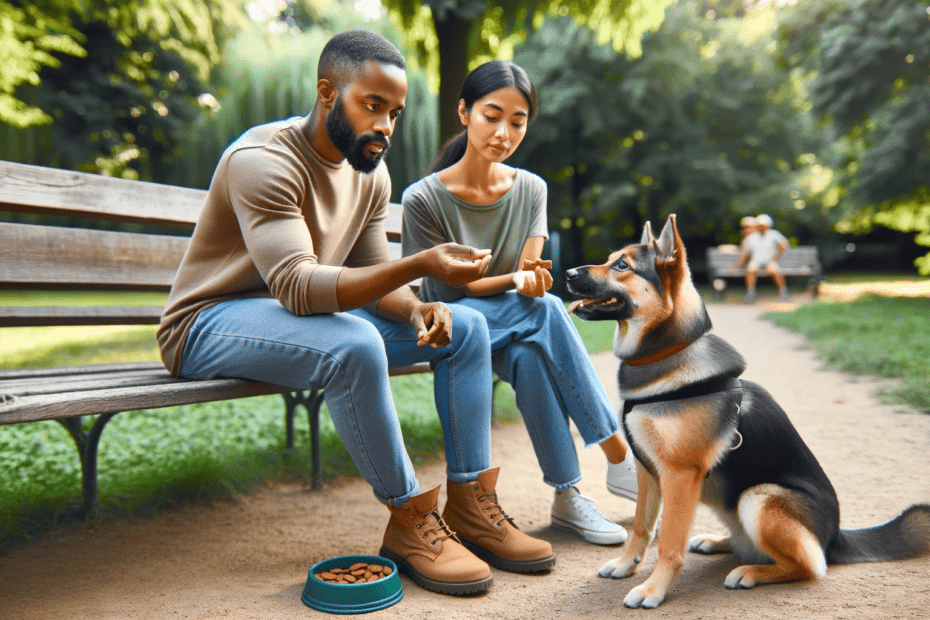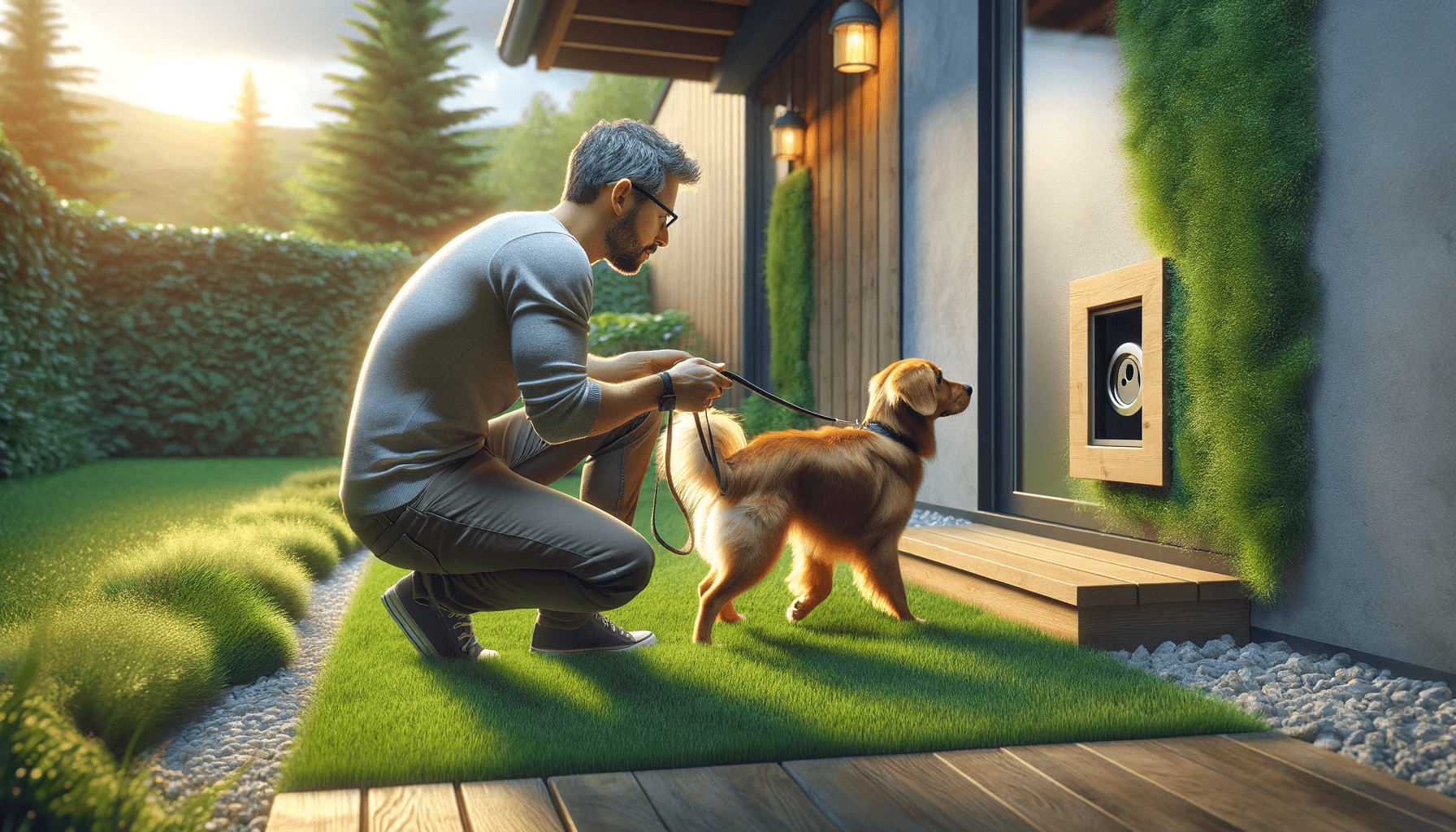Are you struggling to handle an aggressive dog? Don't worry, we've got you covered! In this article, we will share three proven tips to help you effectively manage aggressive behavior in your furry companion.
From identifying warning signs to setting boundaries and using positive reinforcement techniques, these practical strategies will empower you to create a safer and more harmonious environment for both you and your four-legged friend.
Let's dive in and transform your relationship with your dog today!
Key Takeaways
- Regularly observe and understand your dog's behavior to identify signs of fear and anxiety.
- Establish clear boundaries and rules, and consistently enforce them to establish leadership and provide a sense of security for your dog.
- Use positive reinforcement techniques such as treats, verbal praise, and clicker training to reward desired behavior and build trust and confidence.
- Create a safe environment by removing triggers that may cause aggression, providing a secure space for your dog, and avoiding punishment-based training methods.
Identifying Aggressive Behavior
You should regularly observe your dog's behavior to accurately identify signs of aggression. Understanding canine body language is crucial in recognizing these signs. Dogs communicate through various body postures and signals, which can indicate their emotional state. Being able to interpret these signals will help you identify any signs of fear and anxiety in your dog, which can contribute to aggressive behavior.
Some common signs of fear and anxiety in dogs include a lowered body posture, tucked tail, flattened ears, and wide eyes. They may also pant excessively, yawn repeatedly, or lick their lips excessively. Growling, snarling, or baring teeth are clear indications of aggression. It's important to note that aggression can be directed towards people, other animals, or even objects.
By observing your dog's behavior closely, you can determine if they're displaying any of these signs. If you notice any aggressive behaviors, it's essential to address the issue promptly. Seeking professional help from a dog trainer or behaviorist can provide you with the necessary guidance and techniques to handle aggressive behavior effectively.
Establishing Boundaries and Rules
To effectively address aggression in your dog, it's crucial to establish clear boundaries and rules. Consistency in training is key to helping your dog understand what behaviors are acceptable and what're not. Dogs thrive on routine, so it's important to establish a consistent set of rules and stick to them. This means enforcing the same rules every time, regardless of the situation or your mood.
Asserting leadership in the pack is another important aspect of establishing boundaries and rules. Dogs are pack animals and they look to their leader for guidance. By taking on the role of leader, you can help your dog feel secure and confident, which can reduce aggressive behavior. To assert your leadership, make sure to set clear boundaries and enforce them consistently. This includes things like not allowing your dog on the furniture, requiring them to wait before going through doorways, and not tolerating any aggressive behavior.
Implementing Positive Reinforcement Techniques
Implement positive reinforcement techniques to encourage and reward desired behaviors in your aggressive dog. Positive reinforcement is a powerful tool that focuses on rewarding your dog for good behavior, rather than punishing them for bad behavior. Here are some effective communication techniques and strategies to build trust and bond with your dog:
- Use treats: Reward your dog with treats when they exhibit the desired behavior. This will create a positive association and motivate them to repeat the behavior.
- Use praise: Verbal praise and affection can go a long way in reinforcing good behavior. Dogs thrive on positive attention and will be encouraged to continue behaving well.
- Use clicker training: Clicker training involves using a clicker to mark the desired behavior, followed by a treat. This method helps your dog understand exactly what they're being rewarded for.
- Consistency is key: Be consistent with your rewards and expectations. Dogs learn best through repetition and routine, so make sure to consistently reinforce desired behaviors.
- Be patient and persistent: Building trust and bond with your dog takes time. Be patient and persistent in your training efforts, and remember to always use positive reinforcement.
Frequently Asked Questions
What Are Some Common Medical Conditions That Can Cause Aggressive Behavior in Dogs?
Some common medical conditions can cause aggressive behavior in dogs. It's important to recognize the signs and seek proper treatment. By understanding the underlying health issues, you can help your dog overcome aggression and ensure their well-being.
How Can I Prevent My Dog From Becoming Aggressive Towards Other Animals?
To prevent your dog from becoming aggressive towards other animals, start by using training techniques for dog aggression. Consistently reinforce positive behavior, socialize your dog with other animals, and seek professional help if needed.
Are Certain Dog Breeds More Prone to Aggression Than Others?
Certain dog breeds may be more prone to aggression than others due to their genetic predispositions. However, it's important to remember that a dog's behavior is also influenced by their upbringing and environment, highlighting the nature vs nurture debate in aggression.
Can Aggressive Behavior in Dogs Be Completely Eliminated With Training?
Yes, aggressive behavior in dogs can be effectively reduced with training. Understanding the underlying causes of aggression and employing effective training techniques are key. It's possible to eliminate aggressive behavior, but it requires consistent effort and patience.
Are There Any Legal Consequences for Owning an Aggressive Dog?
If your dog exhibits aggressive behavior, there can be legal liabilities for you as the owner. It is important to take immediate steps such as consulting a professional trainer or behaviorist to address the issue.
Conclusion
In conclusion, handling aggressive dogs requires a combination of understanding their behavior, setting clear boundaries, and using positive reinforcement techniques.
By identifying signs of aggression, establishing rules, and rewarding good behavior, you can effectively manage your dog's aggression and create a safe and harmonious environment.
Remember to seek professional help if needed and always prioritize the safety of both your dog and those around them.
With patience and consistency, you can help your aggressive dog become a well-behaved and happy companion.






